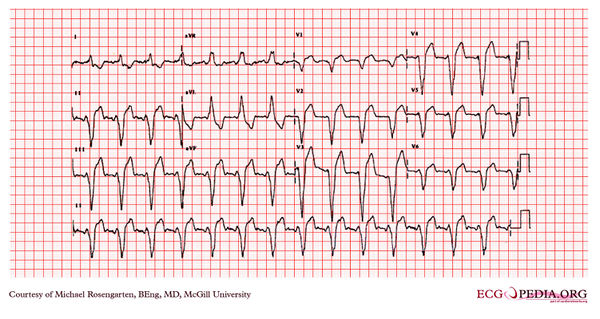McGill Case 325: Difference between revisions
Jump to navigation
Jump to search

(Created page with "{{McGillcase| |previouspage= McGill Case 324 |previousname= McGill Case 324 |nextpage= McGill Case 326 |nextname= McGill Case 326 }} [[File:E3251.jpg|thumb|600px|left|This is...") |
No edit summary |
||
| Line 11: | Line 11: | ||
The patient had developed atrial flutter, and the pacemaker was following this with a 3:1 block. The flutter is seen in the second panel where the pacemaker was set to a VVI mode and a rate of 30/min. Note that in the first tracing the pacer spikes are not well seen as the pacemaker is pacing in a bipolar mode. | The patient had developed atrial flutter, and the pacemaker was following this with a 3:1 block. The flutter is seen in the second panel where the pacemaker was set to a VVI mode and a rate of 30/min. Note that in the first tracing the pacer spikes are not well seen as the pacemaker is pacing in a bipolar mode. | ||
]] | ]] | ||
Latest revision as of 10:21, 21 February 2012
| This case report is kindly provided by Michael Rosengarten from McGill and is part of the McGill Cases. These cases come from the McGill EKG World Encyclopedia.
|

This is a cardiogram from a middle aged man with palpitations. The patient had a dual chamber pacemaker (Vista) set at a lower rate of 60/min, and upper rate of 100/min. The patient had developed atrial flutter, and the pacemaker was following this with a 3:1 block. The flutter is seen in the second panel where the pacemaker was set to a VVI mode and a rate of 30/min. Note that in the first tracing the pacer spikes are not well seen as the pacemaker is pacing in a bipolar mode.
